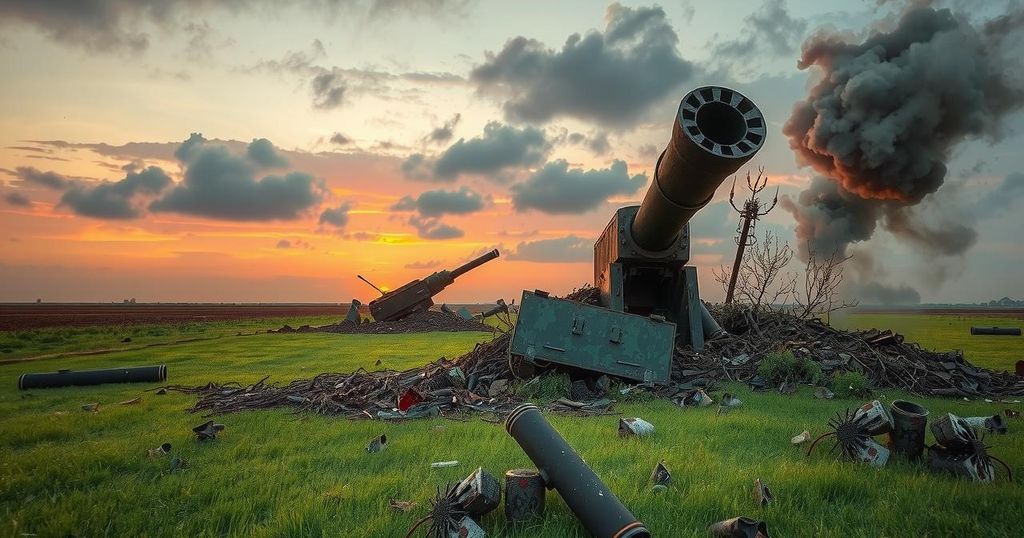Ukrainian Forces Successfully Target North Korean Howitzers in Kursk
Ukrainian forces have destroyed three North Korean howitzers in the Kursk region, as reported by the Unmanned Systems Forces Command. This represents a significant strike against the Koksan artillery systems, which are now being utilized by the Russian army. The M1978 Koksan howitzer, capable of firing up to 60 km, highlights the artillery challenges faced by Russian forces amid ongoing combat.
The Unmanned Systems Forces Command reported that Ukrainian forces have successfully destroyed three North Korean howitzers situated in the Kursk region. These artillery systems, received by the Russian army from North Korea, were camouflaged within a forest and protected by additional measures, including grill-like structures to shield against FPV drones.
The destruction of these self-propelled howitzers marks the second successful strike against the Koksan artillery systems during the Russo-Ukrainian war. Earlier, operators from the 412th NEMESIS Regiment achieved a similar success in the Luhansk region a month prior.
The M1978 Koksan howitzer is North Korea’s longest-range artillery piece, which features a 170-mm gun capable of firing up to 60 km, originally designed to target Seoul from the north of the demilitarized zone. Currently, Russian forces are employing this artillery in their ongoing military operations against Ukraine, attempting to recover from significant artillery losses.
As a point of context, as of March 18, there have been 76 combat clashes reported between Ukrainian defenders and Russian troops, with fighting persisting across six fronts—particularly intense in the Kursk region, according to reports from Ukrinform.
In conclusion, the successful destruction of the North Korean howitzers by Ukrainian forces reflects the ongoing military challenges faced by the Russian army in their campaign against Ukraine. As these artillery systems are deployed on the battlefield, Ukrainian drone operators have demonstrated effective targeting capabilities, which could potentially alter the dynamics of the conflict. The persistence of combat encounters highlights the continued volatility in the region, especially around Kursk, underpinning the overall complexity of the Russo-Ukrainian war.
Original Source: www.ukrinform.net




Post Comment